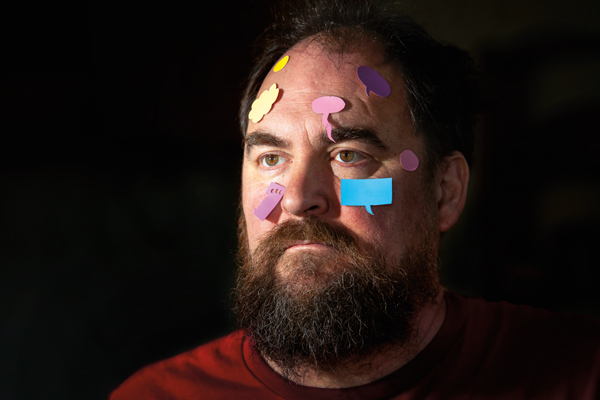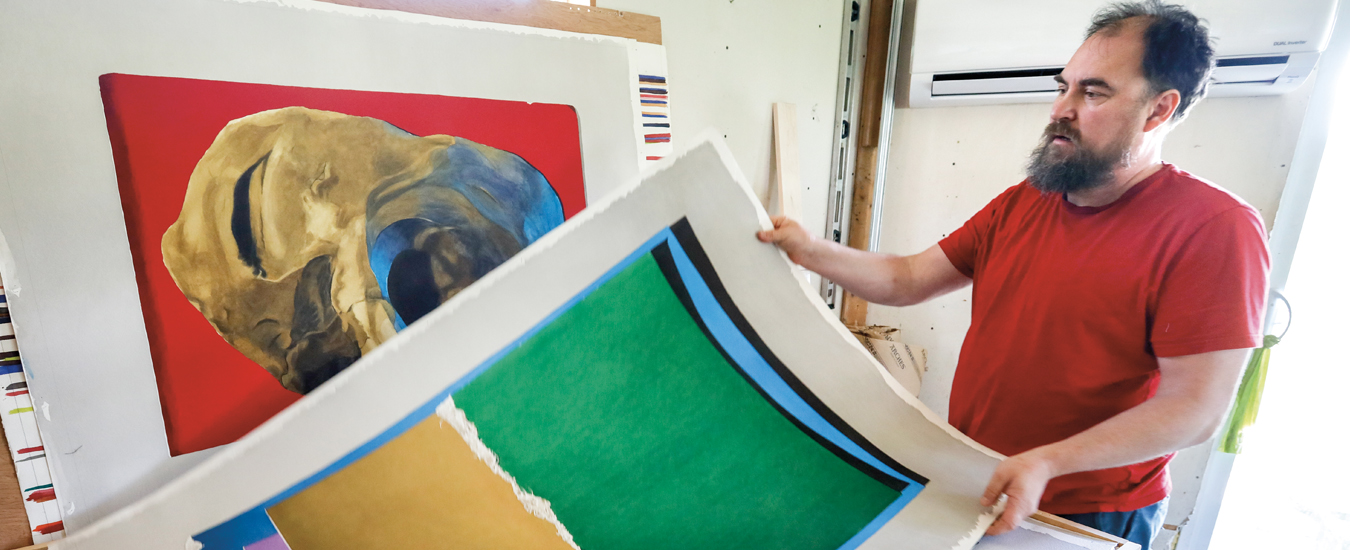The cookie tin in Hans Wendt’s hands is an unassuming container for the pieces of paper that helped make him the first P.E.I. artist to sell work to the National Gallery of Canada, in Ottawa. It’s surprising when he opens it. The bits of coloured paper inside, which for years have been at the centre of his art, are so small.
It’s not that Wendt’s work is on a grand scale — the paintings are generally about a metre wide and 1.5 metres high — but it doesn’t seem like their subject matter should be held so easily between two fingers.
That’s just one of the contradictions in Wendt’s work. It’s abstract, but highly realistic. It’s accessible, you can see clearly what it is, but it’s a struggle to understand what it’s about. It’s about forcing the viewer to ask a question, says Wendt: “You’re really good at painting, you know, technically. But why would you paint that?”
What he’s painting is these bits of torn and cut up paper. The paper pieces, pictured larger than life, are laid out in patterns. The torn edges reveal white underneath, the colour is only on the surface, and where it curls up at the edge it casts shadows.
It’s so real you long to touch it because you want to know: Is it a collage or a painting? There’s an intentional playfulness to it. It’s part of what makes the work accessible. That playfulness is also reflected in the title of a new book on Wendt and his paintings, Perditio Ingenii, Latin for “Waste of talent.”
The pictures, however, become less accessible when you come to that question “Why would you paint that?” What do the paintings mean?

They don’t mean anything at all, insists Wendt, adding paradox to contradiction, because that’s the point. This combination of accessibility and inaccessibility partly comes from where he lives, he says. Not only is P.E.I. far from the centres of the art world, he also lives well outside of Charlottetown, in Millvale, in a small house in a tiny valley, down a long, steep driveway connecting to a dirt road.
“I’m isolated. I live in the middle of nowhere. I’m not part of any art scene or circle or group. I do, however, live in a place where I find, you know, people don’t really get art,” says Wendt. “I think a lot of what I do is sort of informed by my own frustration with the way the people don’t get art.”
There’s an old cliché about modern art: My three-year-old could do that. And a three-year-old could tear up and cut out pieces of paper and make a collage. But Wendt then turns the cliché on its head, by creating highly realistic paintings of the collages.
And he is not just poking fun at people who don’t like abstract art. His realistic painting can also irritate abstract art snobs.
“I think he’s interested in both tantalizing people and frustrating them at the same time,” says Kevin Rice, director of the art gallery at Confederation Centre in Charlottetown, which has two of Wendt’s works in its collection.
“His approach to painting, serious and not serious at the same time, is really a strength of his work.”
Wendt has no objection to art with a message, but that’s not what he does.
“It’s much more about the conversation around the painting as opposed to the actual image or subject,” says Rice.
By resolutely keeping meaning out of his work, Wendt hopes to engage the viewer to bring their own understanding to it.
“It’s a moving target. That’s what it wants to be, and that’s when it’s good,” he says. “If I can make a painting that changes over time and you realize new things about it, it has a longevity.”

